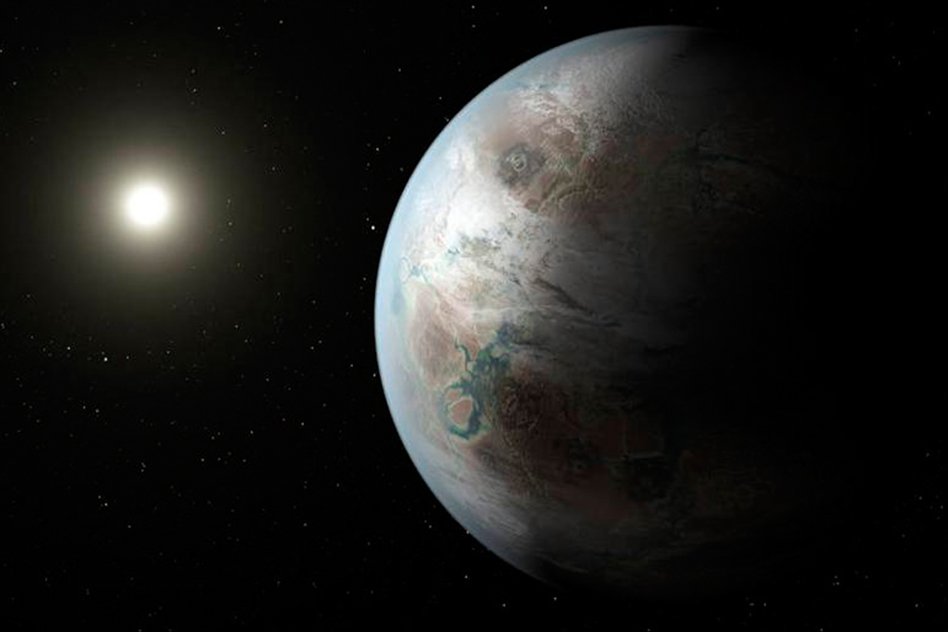This artist's concept depicts one possible appearance of Kepler-452b.(NASA Ames/JPL-Caltech)
- Kepler-452b is smallest planet to date discovered orbiting in the habitable zone of a G2-type star, like our own
- The planet is 60 per cent larger in diameter than Earth and is 1,400 light years away in the constellation Cygnus
- It has a similar size orbit to Earth, receives roughly the same amount of sun light and has same length of year
- Scientists are not yet sure whether it hosts life, but say if plants were transferred there, they are likely to survive
NASA has discovered the closest thing yet to another Earth, scientists announced in a press conference Thursday. The exoplanet is named Kepler-452b, and it’s the first near-Earth-sized planet found orbiting in the “habitable zone” of a sun-like star.
The habitable zone is the area around a star where liquid water can pool on the surface of an orbiting planet, thus enabling life as we know it. Scientists can’t be sure yet whether Kepler-452b has a rocky surface — not to mention water — but it stands a better chance than any previously discovered exoplanet.
Kepler-452b is about 60 percent larger than Earth in diameter, but it’s the smallest-known planet in the habitable zone of a G2-type star, like our sun. Its mass and makeup are still unclear, but scientists with NASA’s Kepler Mission say it’s probably about five times Earth’s mass with roughly double our planet’s gravity.
This exoplanet’s home star, Kepler-452, is similar to our sun but with a few key differences. It’s 1.5 billion years older, 20 percent brighter and 10 percent larger in diameter. It’s about the same temperature, though, and Kepler-452b is only 5 percent farther away from it than we are from our sun.
“We can think of Kepler-452b as an older, bigger cousin to Earth, providing an opportunity to understand and reflect upon Earth’s evolving environment,” Jon Jenkins, who led the team that discovered Kepler-452b, says in a statement. “It’s awe-inspiring to consider that this planet has spent 6 billion years in the habitable zone of its star; longer than Earth. That’s substantial opportunity for life to arise, should all the necessary ingredients and conditions for life exist on this planet.”











